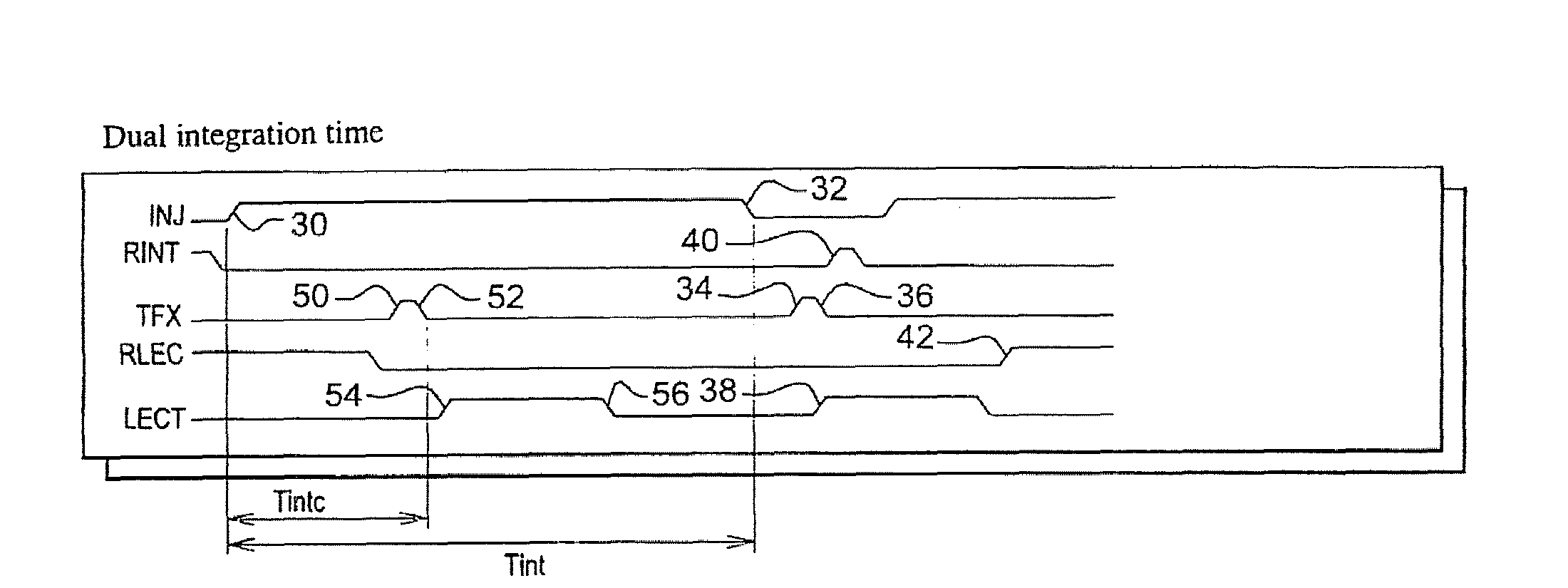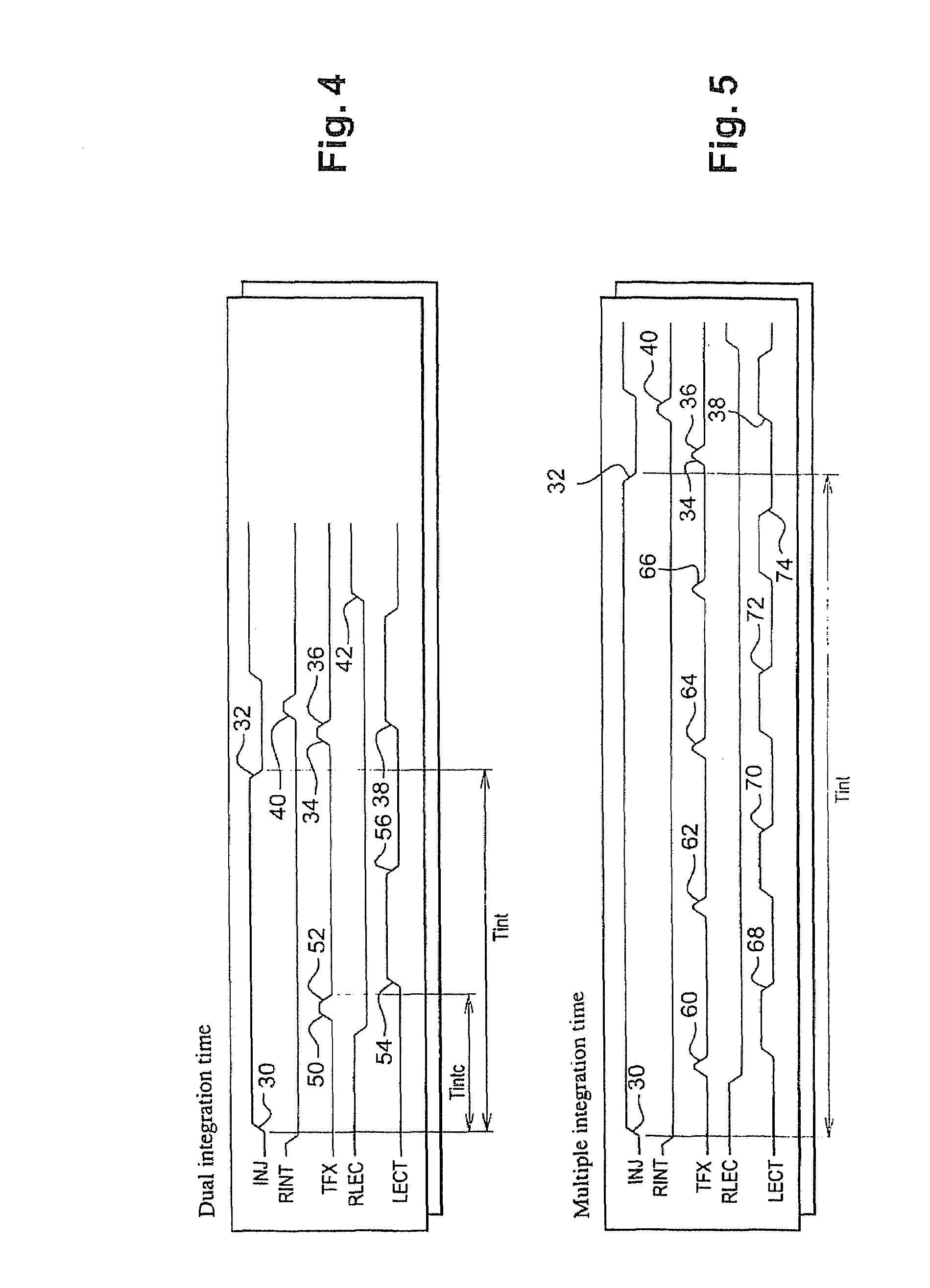Method and device for reading electrical charges produced by a photo-detector, and detector comprising such devices
a photo-detector and photo-detector technology, applied in the field of photo-diodes, can solve the problems of limited size of the integrating capacitor, limited operation of the read device, and the inability to read and deliver a voltage in the matrix read by scanning, so as to achieve the effect of increasing the dynamic of the read noise without degrading the read nois
- Summary
- Abstract
- Description
- Claims
- Application Information
AI Technical Summary
Benefits of technology
Problems solved by technology
Method used
Image
Examples
Embodiment Construction
[0057]In FIG. 4, timing diagrams of control signals in the control circuit 24 show an inventive method of reading the electrical charges produced by the photodiode 12 employed by the read device 10 described in relation to FIG. 1.
[0058]This method mainly differs from the one described in relation to FIG. 2 in that the signal “TFX” is in addition switched, at 50, into its high state during the integration time Tint. The charges already stored in the integrating capacitor 14 are then transferred, via the switch 20, to the read capacitor 16. Once this almost instantaneous transfer is completed, the signal “TFX” is switched, at 52, into its low state. The read signal “LECT” is then switched, at 54, into its high state in order to read the voltage at the terminals of the read capacitor 16, and to transfer the read voltage to the outside of the device 10, and then switched, at 56, into its low state before the signal “INJ” is switched into its low state at 32.
[0059]Once the signal “INJ” i...
PUM
 Login to View More
Login to View More Abstract
Description
Claims
Application Information
 Login to View More
Login to View More - R&D
- Intellectual Property
- Life Sciences
- Materials
- Tech Scout
- Unparalleled Data Quality
- Higher Quality Content
- 60% Fewer Hallucinations
Browse by: Latest US Patents, China's latest patents, Technical Efficacy Thesaurus, Application Domain, Technology Topic, Popular Technical Reports.
© 2025 PatSnap. All rights reserved.Legal|Privacy policy|Modern Slavery Act Transparency Statement|Sitemap|About US| Contact US: help@patsnap.com



